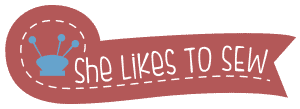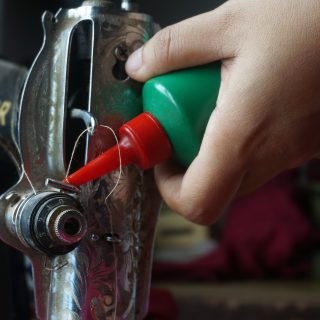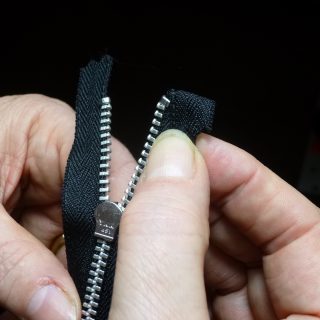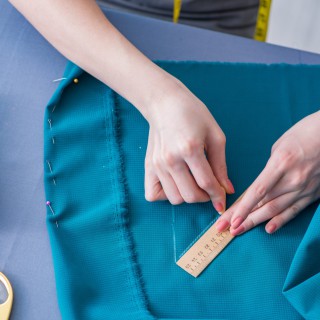A hole in a leather couch is one of the most common issues in leather furniture households. There are many activities that can put your leather couch in danger of getting a hole: pets (especially while they’re still babies), smoking cigarettes inside, children playing, or even inappropriate maintenance. Did you know that you should regularly condition your leather couch, to replenish its oils, and keep it soft? Otherwise, the leather may go dry and before you know it – whoopsie, there’s a hole in your couch.
Anyway, if this does happen, don’t worry. You don’t have to spend a fortune on a new leather couch. There is a way for you to fix this problem all by yourself, without spending a lot of money. The only expenses will be the materials being used and your time.
In this article, I’ll share with you my secret on how to fix a ripped leather couch without anyone knowing it’s been damaged.
How to Fix a Large Hole in Leather Couch
Every good sewer knows that preparation is a job half done. So, let’s see first what do you need to patch a hole in a leather couch.
- Foam;
- Razor knife;
- Glue;
- Sub-patch;
- Tweezers;
- Color repair compound;
- Rubbing alcohol;
- OR: get a leather and vinyl repair kit containing all this in one place (except the foam).
I should warn you that the process is not simple, so you need to be patient and persistent.
Step 1: Repair the Foam
If the substrate foam in your couch’s been damaged, the first step is to repair it by inserting a new piece of foam.
For this purpose, you need some heavy-duty foam you can purchase in an upholstery or fabric store. If the missing foam has an irregular shape, feel free to cut more away to fit in the new piece more easily. Shaping the new piece of foam might take some time until it fits the hole perfectly. For this purpose, use the tweezers and/or a razor knife. If there are minor irregularities don’t worry, the sub-patch will fix this, however, you should try to make it as even and smooth as possible.
The best way to attach the new piece of foam is with fabric glue. Make sure to pick the non-toxic type, especially if you have pets or small children running around. If you’re skilled with a needle, you can also make a couple of thread stitches. If you decide to do this, be careful not to tear through the foam. If the foam needs additional shaping once attached, use the razor knife to perfect it.
Where to Buy Foam?
Like many other unexpected products, you can purchase filler foam on Amazon.
Since you only need to fill the gap, not change the entire inner cushion, the dimensions you pick are not really that important.
Here are some of the upholstery foams I’d recommend for this purpose:
Step 2: Prepare the Hole for the Sub-Patch
The more irregular your hole is, the more difficult it will be to apply the sub-patch. Don’t be afraid to use the tweezers to trim the hole edges or any other remaining pieces. To properly apply the sub-patch, the hole needs to be clean and smooth.
Step 3: Insert the Sub-Patch
Prepare your sub-patch for inserting. Do this by cutting a piece of fabric you plan to use. The sub-patch should be made of strong fabric. If you decide to purchase a leather repair kit, it will usually come with a proper sub-patch. If you’re working without a kit, you can use twill, denim, or polyester.
The piece of fabric should be around 1 inch larger than the hole, so measure both carefully – measure twice, cut once.
Put the patch on top of the hole and cut any residual edges until the patch is lying flat over the hole, with no wrinkles or buckles. Round the corners to make the patch easier to insert under the leather. Insert the patch underneath and stick it with the fabric glue.
Watch not to put too much glue, because any surplus glue will create bumps you’ll no longer be able to remove. Let the glue dry completely or use a hairdryer to speed up the process.
Where Do I Get the Leather Repair Patch and Fabric Glue?
While some repair kits come with a leather patch (more on these kits later), you can also purchase these patches separately. My personal favorites are:
While you’re there, you can also purchase some non-toxic fabric glue:
Step 4: Match the Color
Congratulations, you’ve reached the most tricky step: matching the color of your patch to the surrounding material. Apply the color repair compound on the sub-patch to equalize the color. This might take some time, but don’t worry. Most color repair kits come with an instruction manual on how to find the exact color and a color-mixing dish, and they let you mix the color as much as you need until you get it right.
What’s important is that you pick the kit from the right color family. For example, a brown color family kit won’t be very helpful if your couch is made of black leather.
Although black and brown are the most common colors for furniture leather, you may be dealing with a unique color. In that case, you should get a kit with unique color compounds, that allow you to make any color you want.
The compound will most likely come with an application stick. If not, you can use a popsicle stick instead. Before application, test the compound on a piece of scrap fabric.
If there are any scratches around the hole, use the compound to fill them in too. It can be helpful to cover up any scuff marks or scratches from dog or cat teeth or nails, which can leave nasty furrows in the couch’s skin.
Once you’re done fixing the color, it’s recommended that you wait until 24 hours for it to fully dry.
Where Do I Find Color Repair?
Color repair compounds are sometimes sold separately, like in the case of the Leather FixIt, but in most cases, they are the main product of a leather repair kit. My personal favorites are kits that give you a lot of freedom with color mixing and making nuances, such as NADAMOO, , Endhokn, or Coconix.
Step 5: Apply Rubbing Alcohol
Once the color is dry, take an old cotton rag and apply some rubbing alcohol on the surface to make it smoother.
Do this by dipping the rag into the alcohol and rubbing it on the previously damaged surface. Pay special attention to the edges.
If you don’t have any rubbing alcohol, don’t worry. You can apply nail polish remover instead. However, keep in mind that nail polish remover can only be applied on real leather. If your couch is made of artificial leather, you may discolor the fabric, and make the damage even worse.
The goal of doing all this is to make the repair patch blend as naturally as possible to the rest of the couch. This all may take a while, but if you’re patient enough, you’ll get it right in the end.
While you’re rubbing the alcohol/nail polish remover in, be careful not to make a hole in the patch, but also not to take off too much of the compound.
How Much Money Do I Need to Fix a Large Hole in Leather Couch?
Depending on the exact materials and the size of the hole that needs fixing, I estimate that the cost can be somewhere between $20 and $100. The kits can cost between $15 and $40, while foam costs some $30 on average. A patch is usually around $12-$15, but you might need a bigger patch if the hole is very large. When you add glue and rubbing alcohol that can reach up to $15 each, you see that the highest possible price of this entire adventure is about $100.
Compared to the money you’d spend on taking it to a professional, it’s a pretty good deal. Not only do you save you cash, but you also get to learn a new skill!
Wrapping It Up
Holes, scratches, and other types of damage on your leather furniture are never good news, but today we’re lucky to have everything we need to resolve our menial problems at our fingertips. All you need is a couple of simple tools and patches joined with patience and willingness to persist through the repetitive process of trial and error of shaping the foam, trimming the hole, fitting the patch, and hitting the right color.
Last update on 2025-07-11 / Affiliate links / Images from Amazon Product Advertising API






